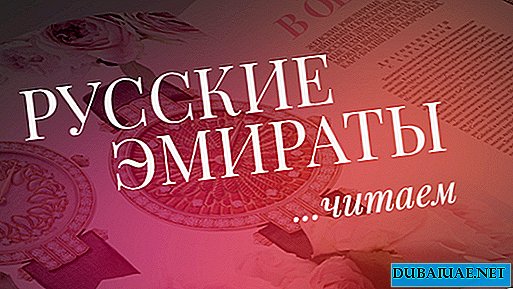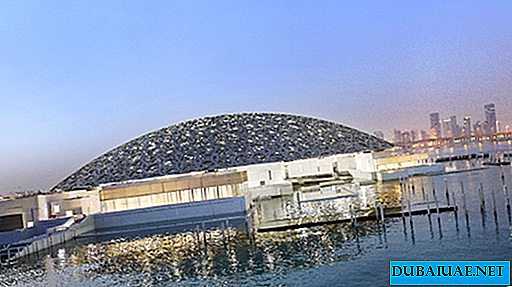THE BEGINNING OF THE XXI CENTURY SHOWED: DEMAND FOR DOMESTIC ART OF THE LAST CENTURY, PURPOSEDLY COLORED IN THE COLOR OF THE ACUTE POLITICAL FIGHT, SHARPLY WENT UP. THAT THAT IN THE 70S I CAN PURCHASE "UNDER THE FLOOR" FOR A DECK BY A PLEASANT AUTHOR TODAY goes to the auction with an estimeyt in hundreds of thousands of dollars and leaves with a hammer a lot of times. WE ATTEMPTED TO UNDERSTAND THE SECRET OF THE NEW WAVE OF SUCCESS OF THE SOVIET ART.
Trend "Nostalgia"
Soviet art, from Kuzma Petrov-Vodkin and the odious and intermediate "Windows of Satire GROWTH" to the original, undermining the underground regime of the late 70s, is an art space that gives us a refracted view of what was happening behind the Iron Curtain. How valuable are these memories to those who lived in a huge country, or the impressions - to those who read about it in the anti-Soviet press? According to art critic John Bard, who lives in Dubai, the popularity of Soviet art over the past few years has increased dramatically. "This is largely due to the fact that the inhabitants of the former USSR scattered around the world and, living in Europe and the USA, began to collect works of art that somehow reflect their national identity," the critic explains. If before Soviet and post-Soviet artists, few could identify, today the situation has changed - their names are booming far beyond the bohemian circle, and the cost of work soars to heaven. The works of Ilya Kabakov, who is called the last great Russian artist, can be found in the Museum of Modern Art and the Solomon Guggenheim Museum in the USA, the Georges Pompidou Center in France, the Ludwig Museum and the Museum of Modern Art in Germany, in the Tate Modern Gallery in England, etc.
In the 60s, Kabakov began as an illustrator of children's books, and after two decades, the founder of Moscow romantic conceptualism became one of the most famous Soviet artists of an unofficial direction and, after emigrating to New York, almost the main representative of modern Russian painting in the West. Among his truly numerous works - paintings, three-dimensional objects and installations made in different techniques. Not only playing on fear of red, but also artistic and semantic uniqueness helped Kabakov to fit into the international context, gain his audience and occupy a well-defined market niche.
Ilya Kabakov received the title of the most expensive living Russian artist after the auction of the Phillips de Pury & Company auction in 2008, when his painting “The Beetle” went under the hammer for a record US $ 5.8 million. The buyer was the Russian owner of Acron Vladislav Kantor. At that time, a work of modern art was recognized as the most expensive ever sold. The conceptual artist received a new portion of attention after the disgraced oligarch Roman Abramovich and his girlfriend, founder of the Moscow Garage Center for Contemporary Culture Daria Zhukova, acquired more than 40 of his works (early albums and installations) in the winter of 2013.
BACK TO USSR!
 Auction trading, like horse racing, is a very specific thing: you never know (this is especially noticeable if Russian collectors are trading in the hall) what drives the buyer - cold calculation, a true passion for art or just excitement to get around an opponent. However, if you analyze the demand, then some interesting trends can still be noted.
Auction trading, like horse racing, is a very specific thing: you never know (this is especially noticeable if Russian collectors are trading in the hall) what drives the buyer - cold calculation, a true passion for art or just excitement to get around an opponent. However, if you analyze the demand, then some interesting trends can still be noted.
First of all, the work of the masters, the so-called "living classics", is in special demand at the auction for contemporary art. Secondly, buyers are more likely to grab onto the "large-caliber", monumental works, taller than human height. And what is even more curious - in all these works the Soviet, or rather, even anti-Soviet themes, the so-called struggle with the system, are emphasized. Is it really that the art industry is driven by nostalgia for the USSR ?!
According to experts, the value of the collection, which was collected by American collector John L. Stewart for two decades, amounted to about US $ 60 million. If you measure the success of contemporary artists by their presence at world-famous specialized auctions, then, of course, the closest associates of Ilya Kabakov, Eric Bulatov and Oleg Vasiliev, will be the first to take a high price bar. The first of them, one of the most famous Russian avant-garde artists, is considered the founding father of social art. Bulatov was the first Russian artist who, in Soviet times, in 1988, presented his works at the Georges Pompidou National Center for Art and Culture in Paris. His paintings are recognized all over the world thanks to the skillful play on Soviet reality, which only anti-Soviet artists could experience. The feeling of running in a circle, hopelessness, collective opinion and arbitrariness of officials described by the "rough poster language" - all this finds its buyer. If from the USSR Bulatov’s work, sold to him almost half a penny from under the floor, was taken out with the stamp “Has no artistic value”, then in 2007 his painting “Soviet space”, with Leonid Brezhnev against the background of the Soviet coat of arms , left the auction house Phillips de Pury & Company for US $ 1.6 million, and two more paintings on Soviet themes, including "Revolution - perestroika," were sold at a million dollars each. And just a couple of months ago, at Christie's auction, the “oil” “Freedom is Freedom II” went into a private European collection for US $ 400 thousand.
An old friend of Eric Bulatov is Oleg Vasiliev, one of the leaders of unofficial art of the 60-70s. To feed themselves in Soviet Moscow, they together illustrated children's literature - for the publishers Detgiz and Malysh. Their creative tandem has successfully existed for 33 years. In 1965, Vasiliev created the first work, "House on Anzer," in the 90s a series of nostalgic landscapes, including "Bereznyak on the outskirts of Moscow" and "After the Rain", which were auctioned by Christie 's. His realistic canvases, which cost up to half a million dollars, are sometimes distinguished by photographic accuracy - largely thanks to her they won the recognition of the American public. Vasiliev’s works are exhibited at the Tretyakov Gallery and the Russian Museum, and acquiring them is a real success for the collector (the artist died in 2013 - approx. Ed.).
Private storage
“Over the past five years, we have seen a significant increase in the number of collectors,” says Evelyn Hitkoat Amory, specialist and co-director of the auction of Russian art at Christie's auction house. “If earlier Russian art of all periods was traditionally in demand among Russian-speaking clients, then the constant presence of Russian authors at international exhibitions and art fairs has put in the ranks of buyers of Americans and Western Europeans. " One of the most passionate collectors of post-Soviet painting, in her opinion, are citizens of the United States, the Netherlands, Britain and Norway. Simultaneously with the growing interest in painting, the demand for less traditional forms of art - photography, cinema, performance art and installations - is increasing. According to John Bard, the Chinese are becoming no less passionate consumers of Soviet art. Everything that is connected with the communist doctrine, the images of Lenin and the expectations of a bright future is just dear to their heart. According to Wealth X, the top list of the most notable art collectors includes only one representative of the former USSR, who can only conditionally be called our compatriot - the current Prime Minister of Georgia Bidzina (Boris) Ivanishvili.
The cost of his collection is estimated at US $ 1 billion. Some works adorn the walls of the futuristic premier's castle, built on Mount Mtatsminda by Japanese architect Sina Takamatsu.
One of the largest collectors of contemporary art, in addition to the already mentioned Roman Abramovich and Vyacheslav Kantor, is considered the president of Alfa Bank Peter Aven. He owns the most complete collections of works by participants in leading art associations of the late XIX - early XX centuries: "Jack of Diamonds", "Blue Rose", "World of Art". The collection contains outstanding works by Valentin Serov, Konstantin Korovin, Kuzma Petrov-Vodkin, Mikhail Larionov.
Experts estimate the cost of the meeting at US $ 500 million. One of the success factors, experts say, is that contemporary art is still more accessible than, for example, works of the Silver Age or the avant-garde era, thanks to which they attract the attention of young and beginners collectors. At the same time, a new generation of young collectors who profess a competent investment approach while working on the art market has not yet grown in Russia. But hurry, experts say, now is the time. "Contemporary Russian art remains relatively inexpensive compared to European.
However, numerous talented and young authors are promoted by the most fashionable galleries, which are monitored by the entire art community. For example, critics have already called Pavel Pukhov, exhibited at the Museum of Modern Art in Moscow, Russian Banksy (the artist passed away in 2013, at the age of 29 years old - Ed.), And the solo exhibition of the Russian genius Pavel Pepperstein was a huge success in London Such work is definitely not on the shelves, "says Evelyn Hitcoat Amory.
Ours are there
The fact that the market for contemporary art in Russia - primarily in Moscow and St. Petersburg - is growing is evidenced by the holding of prestigious international shows. This summer, the State Hermitage Museum gave its space under the Manifesto 10 Biennale of Contemporary Art, which runs until October 31. One of the most important forums of European art, along with the Venice Biennale and the Kassel document, will allow Russians to get acquainted with the works of world-famous authors and attract foreign collectors to the country.
The interpenetration of Russia and the West is growing and cannot help but sprout. The grand exhibition of Kazimir Malevich, the founder of Suprematism and a key figure during the Russian avant-garde, which opened in the London Tate Modern gallery, once again recalls Russia's colossal role in the world art process. More than 400 works of the Russian avant-garde artist, rare drawings, sketches and sketches of the artist himself, his colleagues and students were brought to London from the USA, Germany, France, Greece and, of course, Russia. Visitors become witnesses of a unique phenomenon: in the halls of the gallery for the first time two Black Squares met, which became the starting point of new art: one provided the Russian Museum, the second - the Tretyakov Gallery.
With great impatience, the world art community is waiting for the 56th Venice Biennale of 2015. For the first time in the history of the Russian pavilion, it will show a personal project of a woman artist - the legendary figure of the Moscow art scene Irina Nakhova. Last year, the artist received the Kandinsky Prize for the media installation "Untitled", in which she turned to the Soviet past. The project consisted of a video collage about the life of the family (grandparents, mother, father and the artist herself) and two large photographs: “Leadership” - the image of the party elite, people's faces replaced with red packets, and “Skaters” - faces painted with a ballpoint pen. This is a story without faces and names - about the erased history and short memory of contemporaries. More relevant than ever!











